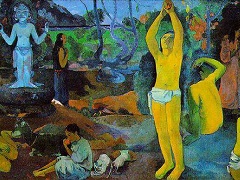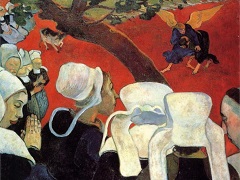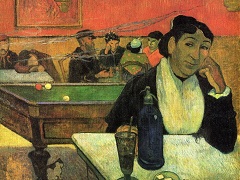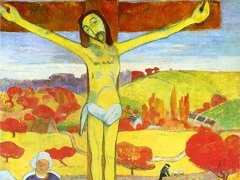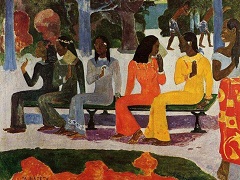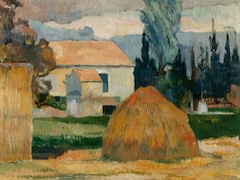Why Are You Angry? 1896 by Paul Gauguin

The structure and compositional rhythm of Gauguin's paintings tend in two directions. On the one hand he employs the fluid curve, reinforcing the lines of bending figures with background areas having similar continuous
contours; on the other he uses a frieze-like form built around rhythmic horizontals and verticals.
The clarity of the Egyptian technique, its rhythmic alternation of bodily contour and intervening space, its unifying harmony of proportion which allowed him both the "mystery" of which he was so fond, and a grace without
softness, all these appealed to the painter's sense of style.
In this picture there are the repeated verticals of the houses, the trees, and the figures, giving rise to lines so related that they carry the eye across the canvas, lending it breadth and amplitude. And there are also the horizontals that start at the lower right and carry back into the distance. The feet, the glance, the whole pose of the foreground figure, the green patches in the red earth, the yellow surface of the house wall, and the smaller house in the distance, all establish planes at intervals that measure a deep space. Unlike so many of Gauguin's paintings where space is denied, or only suggested, this picture, with its contrast of solid and void, its conscious presentation of a spatial continuum that both binds and separates the elements within it, is of a classic conception that both Paul Cezanne and Seurat would have understood.

